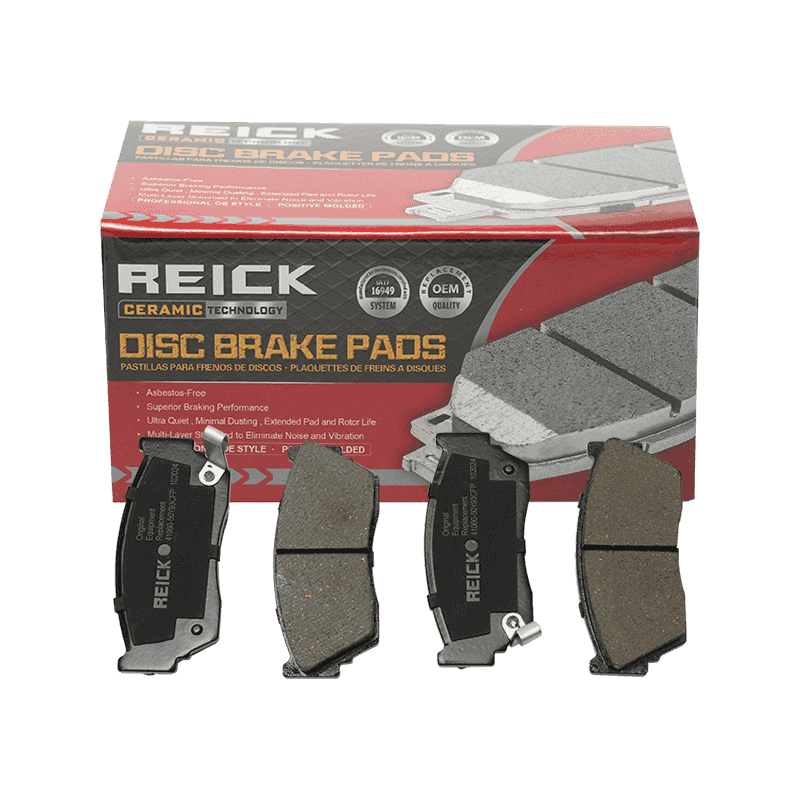 2025.07.04
2025.07.04
 Industry News
Industry News
When it comes to vehicle safety and performance, few components are as critical as the braking system. Among the various friction materials available today, ceramic brake pads have emerged as a preferred option for discerning drivers seeking reliability, longevity, and quiet operation. But what makes them stand out in an increasingly competitive market?
Ceramic brake pads are composed of a blend of dense, high-temperature-resistant ceramic fibers, combined with bonding agents and fillers. This unique composition grants them a range of advantages over traditional organic or semi-metallic alternatives. Unlike their metallic counterparts, which can wear down rotors more aggressively, ceramic compounds offer a gentler touch—reducing wear on both the pad and the rotor surface.
One of the most notable benefits is noise reduction. Ceramic formulations are inherently quieter, minimizing the irritating squeals and vibrations often associated with less advanced materials. This acoustic superiority makes them especially appealing for luxury vehicles and daily commuters where cabin comfort is paramount.
Heat dissipation is another area where ceramic brake pads excel. Engineered to handle high thermal loads, they maintain consistent performance even under repeated heavy braking. Whether navigating mountain roads or enduring rush-hour traffic, ceramic pads respond with predictable modulation and fade resistance—critical traits for maintaining control in dynamic driving conditions.
Dust generation is a concern for many vehicle owners, particularly those who take pride in keeping their wheels spotless. Ceramic pads produce significantly finer and lighter-colored dust compared to semi-metallic variants, which tend to leave behind dark, abrasive residue. This not only enhances aesthetics but also reduces maintenance frequency, making ceramic an ideal match for high-end rims and show-worthy finishes.
Durability is yet another compelling reason why modern drivers are leaning toward ceramic technology. While initial costs may be higher than conventional options, the extended lifespan and reduced component wear translate into long-term savings. For those prioritizing value beyond sticker price, ceramic represents a strategic investment in both performance and upkeep.

However, it's important to note that ceramic brake pads are not universally superior in every scenario. In extreme cold or high-performance track environments, other materials might offer more tailored characteristics. That said, for the vast majority of everyday drivers—especially those operating passenger cars, SUVs, and light trucks—ceramic provides a well-rounded balance of efficiency, comfort, and endurance.
Automotive manufacturers have taken notice. Many premium brands now equip their vehicles from the factory with ceramic-based systems, recognizing the growing demand for silent stops and cleaner wheels. Aftermarket suppliers have followed suit, offering compatible upgrades that allow older models to benefit from this advanced technology without compromising OEM specifications.
In essence, ceramic brake pads represent a convergence of engineering innovation and user-centric design. They cater to the evolving expectations of today’s driver: someone who values precision without sacrificing convenience, and who seeks performance enhancements that don't come at the cost of refinement.
So, are ceramic brake pads the ultimate choice for modern vehicles? The answer depends on individual priorities, but for those who place emphasis on quiet operation, reduced dust, and long-term durability, the case for ceramics is compelling. As automotive technology continues to evolve, one thing remains clear—braking solutions must keep pace. And in that race, ceramic pads have firmly positioned themselves at the forefront.